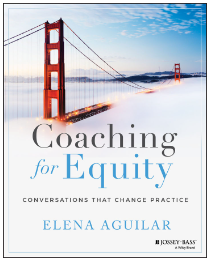- MN ABE Connect
- Archive
- New Antiracism Instructional Resources Posted!
 November 22, 2022
November 22, 2022
New Antiracism Instructional Resources Posted!
Cydnee Sanders, Library CuratorATLAS has posted several new resources in the Antiracism in ABE resource library on our website – with a focus on practical instructional resources – so let’s take a look at what’s new!
But first…
Navigating the Antiracism in ABE resource library
As a reminder, Antiracism in ABE is one section of the Cultural Competency library that was launched in 2020 under the curation of Yixiu Chen. (I have since taken over as curator of the Antiracism section.) This library was designed to be a useful resource for those working in the field of Adult Education to build on their knowledge and ability to implement antiracist practices, LGBTQ+ inclusion, and trauma-informed practices in their classrooms and programs.
 In order to help you find specific resources, the library is organized into several main topics, categories and subcategories. For example, under Antiracism in ABE you will find four categories, two of which have additional subcategories (click on the plus signs to expand them).
In order to help you find specific resources, the library is organized into several main topics, categories and subcategories. For example, under Antiracism in ABE you will find four categories, two of which have additional subcategories (click on the plus signs to expand them).
Beginning this summer, we started working to revamp the Antiracist Instruction category, since we know teachers are looking for specific things to use in their classrooms. Though antiracist teaching requires deep reflection and constant expansion of our knowledge of culturally responsive practices and how to recognize racism in education, we know it’s helpful to move theory into practice when we can see some examples too. Hopefully the newly added resources will give you a place to start!
Keep in mind that you can also search for resources by using the search function found at the top of all resource library pages. This search tool allows you to filter your results by several different criteria.
You can:
- choose from defined lists of Topics (tags) and Types (such as Classroom Activities, Lesson Plans, Videos, and so on);
- narrow your search to a specific library; and also
- search by keyword(s).
New resources of note
To the girl in English class
In keeping with our goal of tangible things teachers can use in the classroom, the first exciting addition is a TikTok by Hafsat Abdullahi called To the girl in English class, which can be found under the subcategory Language & Bias.
 Similar to the Karen Leung TedTalk in the same section of the library, which was shared in our last library update, this TikTok is another unfortunate but great example of an English language learner speaking about their own experience learning English and facing discrimination.
Similar to the Karen Leung TedTalk in the same section of the library, which was shared in our last library update, this TikTok is another unfortunate but great example of an English language learner speaking about their own experience learning English and facing discrimination.
How could I use this?
Part of having a culturally responsive and sustaining classroom is using diverse perspectives and materials that are relevant to learners’ lives. Many of our learners use social media, so think about how you could incorporate more relevant videos in class to work on listening that leads into powerful discussions that learners can relate to. Provide space for learners to process language bias they face and affirm for them that they do not have to lose their accent to be a proficient English speaker. Many people all over the world speak English with many different accents. Work on intelligibility not assimilation. Have students create their own Spoken Word Poetry!
Heritage Language Resources Hub
 The second inspiring addition is called Heritage Language Resources Hub, which can be found under the subcategory Translanguaging. This is a massive collection of resources in many languages around the world, put together by LESLLA (Literacy Education and Second Language Learning for Adults). A huge part of translanguaging (which is included in culturally sustaining teaching practices) is providing literacy resources in learners’ home languages. This affirms for students that their languages are an asset on their journey of English learning.
The second inspiring addition is called Heritage Language Resources Hub, which can be found under the subcategory Translanguaging. This is a massive collection of resources in many languages around the world, put together by LESLLA (Literacy Education and Second Language Learning for Adults). A huge part of translanguaging (which is included in culturally sustaining teaching practices) is providing literacy resources in learners’ home languages. This affirms for students that their languages are an asset on their journey of English learning.
How could I use this?
Remember that two foundational beliefs of translanguaging is 1) using all of a learner’s language toolbox in the classroom and 2) actively working against the false and racist ideology that English is superior to other languages. Therefore, we can get creative about how to tap into learners’ many language assets.
What’s special about this collection is that we know it’s a lot easier to find books in Spanish and Arabic, but not always Somali or Quechua. If learners are literate in their home languages, invite them to read a story in their language and have them give a written book report or an oral presentation in English! So many opportunities!
Coaching for Equity Tools
And the final transformative addition is a webpage called Coaching for Equity Tools, which can be found under the subcategory Identifying Racism in Education. This website by equity coaching extraordinaire Elena Aguilar and her team at Bright Morning is full of wonderful tools and resources that can help both teachers and education coaches.
For example, the Equity Rubric is a detailed rubric anyone can use in their classrooms or schools to evaluate several criteria of creating a more equitable classroom. For even more details on how to use the rubric be sure to purchase Aguilar’s book Coaching for Equity, which is also linked on the webpage.
How could I use this?
You don’t have to have an official job as a coach to use her materials. Gather a group of coworkers who are serious about creating a more equitable classroom and follow the rubric or other resources like the Teacher to Student Interaction Tracking Tool and the Exploring Identity Markers link.
Have a resource to recommend?
Resources are being continually added to this library, so if you have recommendations for resources or would like to see more resources in a particular area, please feel free to reach out to Cydnee with your suggestions at [email protected].
Have questions about navigating the ATLAS website?
Please contact ATLAS Operations Manager Marisa Geisler at [email protected].
Newsletter Signup
Get MN ABE Connect—the official source for ABE events, activities, and resources!
Sign UpArticle Categories
- ABE Foundations/Staff Onboarding
- ACES/Transitions
- Adult Career Pathways
- Assessment
- CCR Standards
- Citizenship
- COVID-19
- Cultural Competency
- Digital Literacy/Northstar
- Disabilities
- Distance Learning/Education
- ELA
- Equity/Inclusion
- ESL
- HSE/Adult Diploma
- Listening
- Math/Numeracy
- Mental Health
- Minnesota ABE
- One-Room Schoolhouse/Multilevel
- Professional Development
- Program Management
- Reading
- Remote Instruction
- Science
- Social Studies
- Speaking/Conversation
- Support Services
- Teaching Strategies
- Technology
- Uncategorized
- Volunteers/Tutors
- Writing
